- Details
- Hits: 969
Appalachia, October 8, 2024,
State-activated guard units are continuing to deliver the emergency disaster help desperately needed in the Appalachians after Helene’s destruction.
They continue to save their neighbors in the devastated Carolinas, Northern Georgia and Eastern Tennessee.
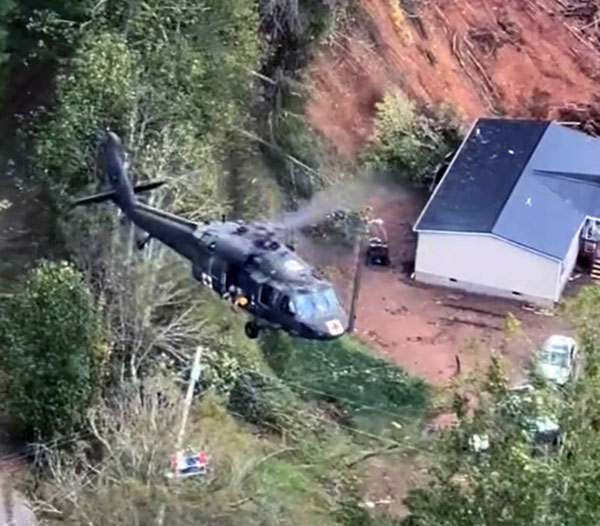
SOT is privileged to send $5,000 monetary relief for South Carolina guard members and their families while they take care of everyone else. Awesome Americans in action. Tangible action. Practical action. Knowledgeable action. Action that preserves lives in the real world.
SOT also re-authorized significant food and water distributions for ongoing guard units performing these critical activities, all picked up by 5-tons and taken by air into the devastated areas to sustain the guard’s work.
Makes you proud to be an American when you see how people step up directly for one another.
~~ The SOT Team
- Details
- Hits: 1023
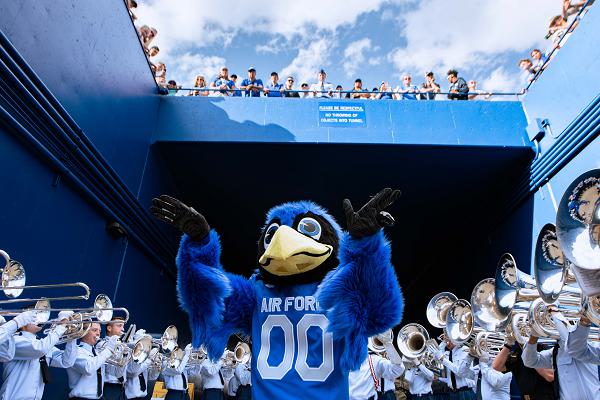
Colorado Springs, Colorado. (September 27, 2024): In this photo by Dylan Smith, the Air Force’s costumed mascot, “The Bird,” performs in the tunnel prior to a football game against San Jose State University at Falcon Stadium. The service chose the falcon, known for its speed, power, and agility. But the burning question is... “Does the Air Force Academy house and train live falcons?”
The Academy does indeed have an aviary of falcons who are maintained by twelve cadet falconers chosen from each new class to replace graduating seniors. The Academy first adopted live falcons in 1959, and they have performed at public events and football games ever since.
Many cadet handlers have little or no experience with birds before coming to the Academy, so it is vital they receive proper instruction. Cadets must learn to successfully train and safely maintain the physical health of the birds. Falconry candidates undergo a weekslong tryout process that includes a raptor licensing exam on biology, feeding habits, and health care of birds of prey.
- Details
- Hits: 1106
“Greater love hath no man than this, that a man lay down his life for his friends.”
John 15:13
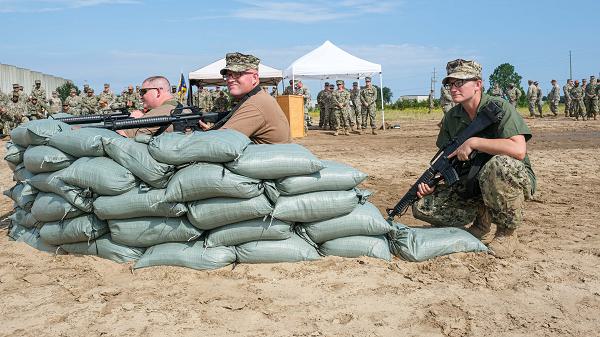
Gulfport, Mississippi. (September 28, 2024): The heroic deeds of a Navy Seabee and his tragic loss were honored this week through a reenactment of the Battle of Dong Zoai which took place in Vietnam in 1965. In this photo by Petty Officer 2nd Class James Hong, Navy Chief Selects reenact the famous battle that took the life of Construction Mechanic 3rd Class Marvin Shields who was posthumously awarded the Congressional Medal of Honor. He is the first and only Navy Seabee to be awarded the medal.
The Battle of Dong Zoai was part of the so-called Vietcong Summer and involved an unfinished Army Special Forces Camp that had been overrun by two thousand uniformed Vietcong. Sheilds was assigned to Seabee Team 1104 and deployed to Vietnam in February 1965.
Once the battle began, Sheilds, although wounded by mortar fire, continued to resupply his fellow Americans with ammunition and helped return enemy fire. The Vietcong had launched a massive, close-range attack with flamethrowers, hand grenades and small-arms fire. Wounded a second time, Shields nevertheless assisted carrying a more critically wounded man to safety. After four more hours of non-stop combat, Sheilds was wounded a third time yet still volunteered to help take out a machine gun nest. After conquering the enemy position with a rocket launcher, Sheilds was injured again, shot in both legs, on his way back to safety. He was subsequently airlifted to Saigon.
- Details
- Hits: 1543

Muscatatuck Urban Training Center, Indiana. (September 19, 2024): There are many ways to detect and diffuse land mines, but sometimes a troop simply needs to get down and personal with these killers. In this photo by Jason Wilkinson, Technical Sergeant Clay Gorham, an explosive ordnance disposal technician from the 355th Civil Engineer Squadron Contingency, Exercise and Deployment, displays the oldest and most primitive method of disposing of explosive devices.
The tedious process, which dates to World War II, begins by carefully clearing debris around the device to determine what type of explosive it contains. Next, a knife blade is inserted at a thirty-degree angle into the ground around the mine to allow room to defuse the device. Any careless move spells instant death.
There are two main types of land mines, one to destroy tanks and armored vehicles and the other to kill humans. Anti-tank mines typically are larger and require more weight to set them off. Infantry troops will not likely trigger these devices.
- Details
- Hits: 867
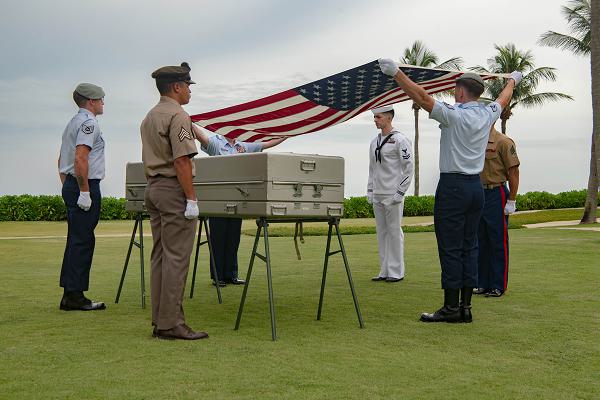
Vietnam. (September 10, 2024): America makes a solemn promise to every person who dons the uniform of our country; You will not be left behind. In this photo by Sergeant Keion Jackson, members of the Defense POW/MIA Accounting Agency repatriation team prepare to drape a flag during a ceremony transferring possible remains for identification. The ceremony marked the end of this round of efforts to recover unaccounted-for personnel from the Vietnam War.
The Defense POW/MIA Accounting Agency was formed by consolidating multiple organizations into one sophisticated search and recovery operation. The Agency is charged with searching for more than 80,000 American service personnel who are missing from previous conflicts.
The Agency’s Laboratory is the world’s largest skeletal identification facility and is staffed by more than 150 anthropologists, archaeologists, forensic odontologists, and support personnel. The lab has three locations, two in Hawaii and another in Nebraska.
The recovery work begins in the field much the same way a crime scene would be treated only it is an archaeological site. As such, scientists use accredited forensic best practices that are recognized by authorities and will stand up in court. These recovery missions typically last about sixty days and sites can range in size from a few feet to an area as large as a football field in air crash investigations.
- Details
- Hits: 847
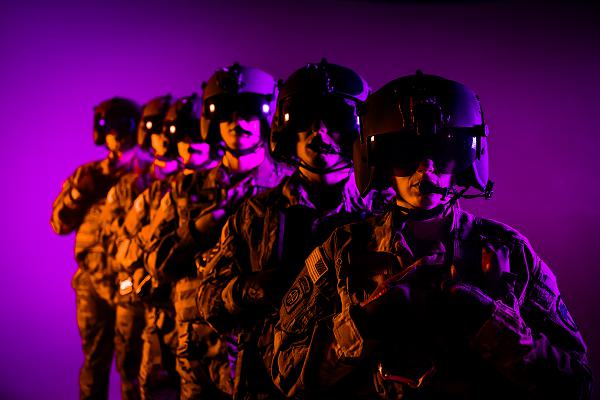
Greenville, South Carolina. (September 22, 2024): Every year, the U.S. military competes with big business for talent, particularly young leaders to serve as the next generation of officers. In this photo by Army National Guard Specialist Turner Horton, a new crop of Army aviators poses for a photo session in support of the South Carolina Army National Guard’s recruitment and talent management effort. They are the epitome of the style and image the Guard wants to convey to young people thinking about serving.
To be competitive, the military is taking its cue from commercial businesses, particularly how they attract and develop talent. The military studied how big corporations use highly sophisticated models for their hiring and retention programs and how they tailor their approach to managing this new generation.


